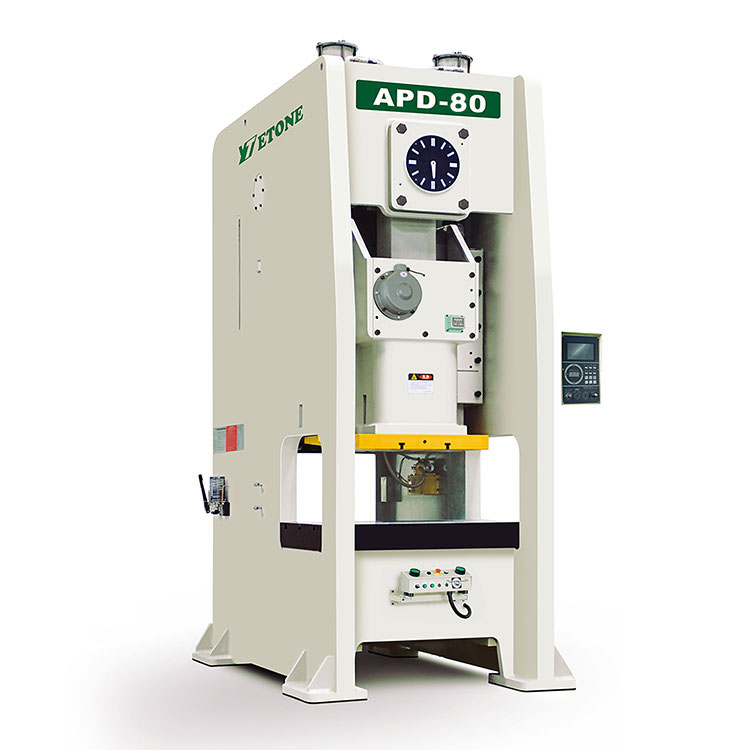Detecting the cause of the straight slide press failure usually requires inspections from multiple aspects such as mechanical, electrical, hydraulic system and control system. The following are common detection methods and steps:
1. Check the mechanical part
Check the slider and guide rail: Wear of the slider and guide rail is one of the common problems. Check whether the guide rail is straight and whether the slider has abnormal noise or stuck.
Check the transmission system: including motors, belts, gears, couplings, etc. If abnormal noise or vibration occurs, it may be that the transmission system is faulty.
Check the press frame: Check for cracks or deformation, especially in parts that bear heavy loads. Excessive deformation will affect the normal operation of the press.
2. Check the electrical part
Motor failure: If the motor is difficult to start or stops running, it may be a motor failure. Check whether the motor current is normal and whether there is overload. You can also use a multimeter to check whether the resistance of the motor winding is normal.
Electrical contactor: Check whether the contactor, relay, circuit breaker, etc. in the control circuit has poor contact or damage. Confirm the normal operation of the electrical control part by detecting the voltage of the control circuit.
Sensors and switches: Check whether the sensors are working properly, such as pressure sensors, position sensors, etc., and whether there are any faults that cause inaccurate feedback signals.
3. Check the hydraulic system
Oil pump problems: Check the working status of the hydraulic oil pump. Overload or damage to the oil pump will cause the press to run unstably or even shut down. Check whether the oil pressure is normal through the oil pump pressure gauge.
Hydraulic oil contamination: If the hydraulic system fails, the hydraulic oil may become dirty or have impurities. Check whether the oil is clear, whether the oil level is normal, and whether the oil is deteriorated or contaminated.
Hydraulic pipelines and valves: Check whether the pipelines are leaking or blocked, and whether the hydraulic valves are working properly. Any problem in the hydraulic system may cause the press to move unsteadily.
4. Check the control system
PLC controller: If the press adopts PLC automatic control, check whether the PLC is faulty. By checking whether the input and output signals of the PLC are normal, check the program running status, and confirm whether there is a program abnormality that causes equipment failure.
Transmission circuit: Check whether the inverter, current transmitter and other equipment in the transmission circuit are working properly, especially when the load changes, whether there is a control system failure.
Operation panel: Check whether the buttons, switches, display screens, etc. on the operation panel are normal, and whether there are any faults that prevent normal operation.
5. Abnormal noise and vibration inspection
Noise analysis: Listen for abnormal noise when the equipment is running. Common sources of abnormal noise may be faults in components such as motors, gears, and bearings.
Vibration monitoring: Use vibration monitoring instruments to detect the vibration of the press during operation. Excessive vibration usually indicates mechanical problems, such as bearing damage or imbalance.
6. Check pressure and temperature
Check pressure: Use a pressure gauge to detect the working pressure of the hydraulic system. If the pressure is too low or unstable, there may be problems with the hydraulic pump, valve, or pipeline.
Check temperature: Check whether the hydraulic oil temperature and motor temperature are too high. Excessive temperature usually indicates system overload, oil pump failure, or poor heat dissipation.
7. Check system parameters
Stroke and pressure setting: Check whether the setting parameters of the press meet the working requirements. If the setting parameters are too high or too low, it may cause the machine to fail or not work properly.
Through a systematic troubleshooting method, the cause of the failure of the straight slide press can be effectively found, and then repaired and maintained.


